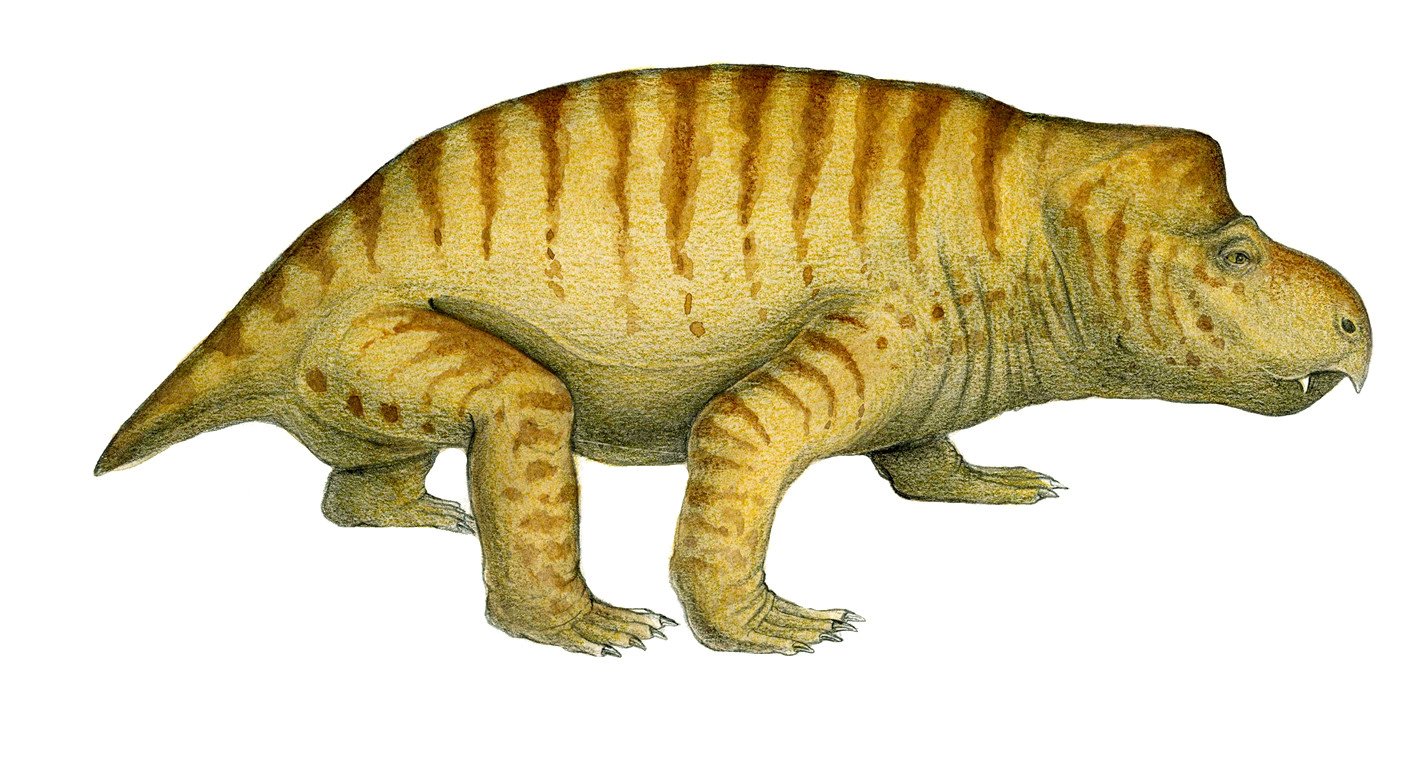The Triassic Period (252 - 201 million years ago)
The Triassic was a time of recovery and diversification after the mass extinction at the end of the Permian.
The Triassic was getting hotter and dryer but a large part of Australia was under the influence of a monsoonal regime. The continents were still united as a super-continent called Pangaea and there was little to stop tetrapod animals migrating except climate.
Australia's Triassic facts
Position
- Most of Australia was within the high latitudes and the south pole lay in Eastern Australia
Climate
- There were no polar ice caps, so the world’s climate was generally hot and dry with monsoonal polar regions.
- Carbon dioxide levels were about three times higher than today.
Setting
- Coal swamps had virtually disappeared. Most of Australia was land but some large sedimentary basins persisted.
Vegetation
- The vegetation was dominated by the forked seed-fern, Dicroidium with abundant horsetails, club-mosses, ginkgoes, ferns, conifers such as pines and araucarians.
Animals
Aquatic environments were dominated by fish and labyrinthodont amphibians.
Labyrinthodont amphibian

Labyrinthodont amphibian, Parotosaurus wadei. Middle Triassic, 240 million years ago. Parotosaurus was a primitive, meat-eating labyrinthodont amphibian. Most labyrinthodonts date to the Triassic, but specimens have been found in Australia from the Jurassic and Early Cretaceous.
Image: Anne Musser
© Australian Museum
© Australian Museum
Dicynodont therapsid, Queensland

Reconstruction of dicynodont therapsid (mammal-like reptile) from Queensland. Dicynodonts were large plant-eating, mammal-like reptiles (therapsids) that survived the mass extinction event at the end of the Permian. They were on the decline in the Triassic.
Image: Anne Musser
© Australian Museum
© Australian Museum
Eoraptor

Eoraptor was one of the first dinosaurs to appear in the fossil record, with a light-weight skeleton, long tail and five fingers on each hand. Scientists agree that the first dinosaur may also have had these features and looked something like Eoraptor.
Image: Anne Musser
© Australian Museum
© Australian Museum
Clatrotitan scullyi (andersoni)

Titanopteran insect, Clatrotitan scullyi (andersoni). Middle Triassic, 240 million years ago. This giant insect, belonging to the extinct group Titanoptera, is distantly related to modern dragonflies and mayflies.
Image: Anne Musser
© Australian Museum
© Australian Museum

Clatrotitan was a giant insect that had a wingspan of about 30 cm. It belongs to the Orthoptera group, which includes crickets and locusts. This exquisitely preserved fossil forewing was described by K.C. McKeown in 1937. It shows the colour pattern and a large stridulatory structure which indicates that Clatrotitan was vocal, like its living relatives. By rubbing its forewings together, Clatrotitan may have produced a deep, resonating call similar to cicadas today. Clatrotitan lived alongside fish, primitive amphibians, horseshoe crabs, crustaceans, and other insects during the middle Triassic (247-237 million years ago) of New South Wales.
Image: Abram Powell
© Australian Museum
© Australian Museum
What was happening in the rest of the world
- The first dinosaurs, prosauropods, early ornithopods, small predators like Eoraptor and Herrerasaurus appeared.
- The mammal-like reptiles were declining.
- The long-tailed pterosaurs rule the air.
- Sharks, bony fishes and ichthyosaurs inhabit the oceans
- Early crocodiles, lizards and turtles thrive; insects such as cockroaches and dragonflies flourish
- Primitive mammals were appearing.





